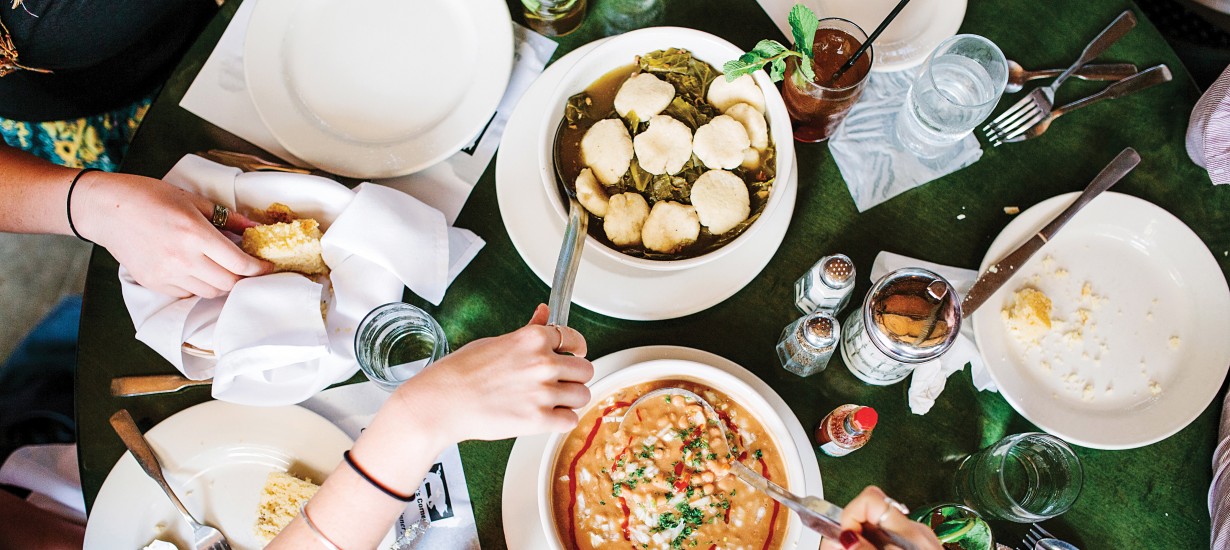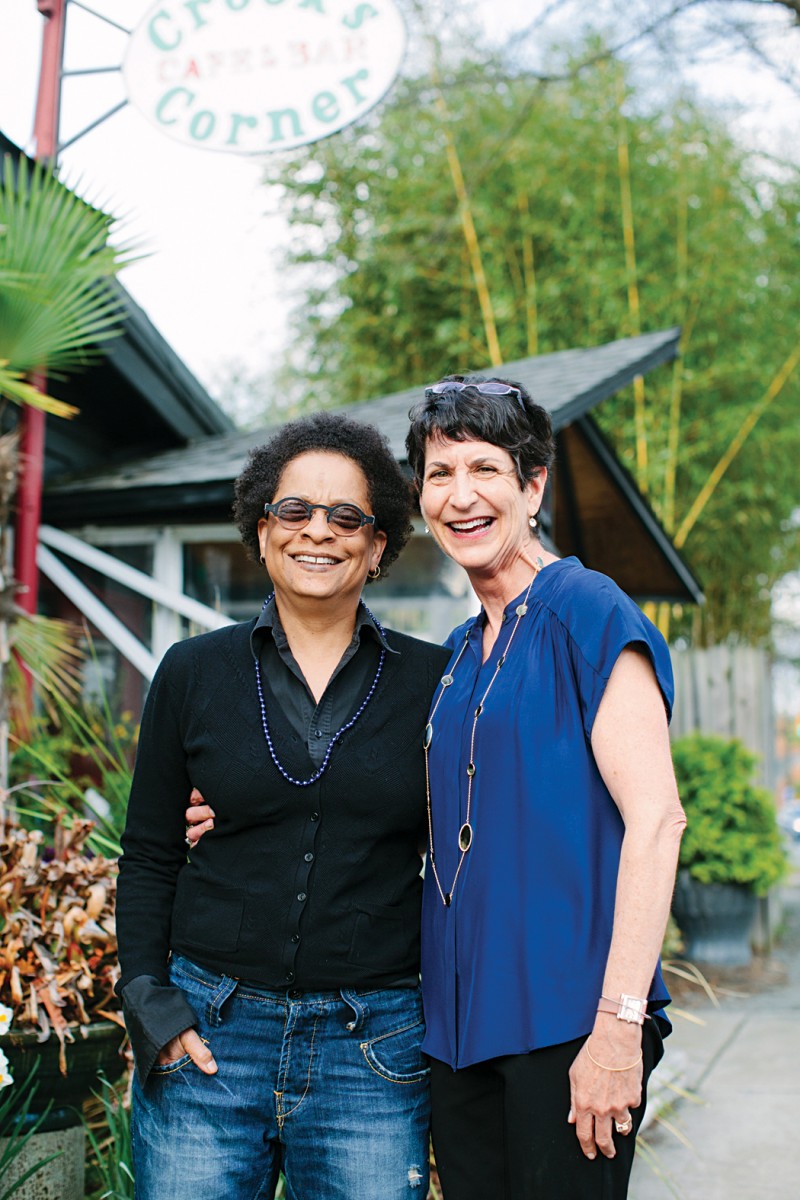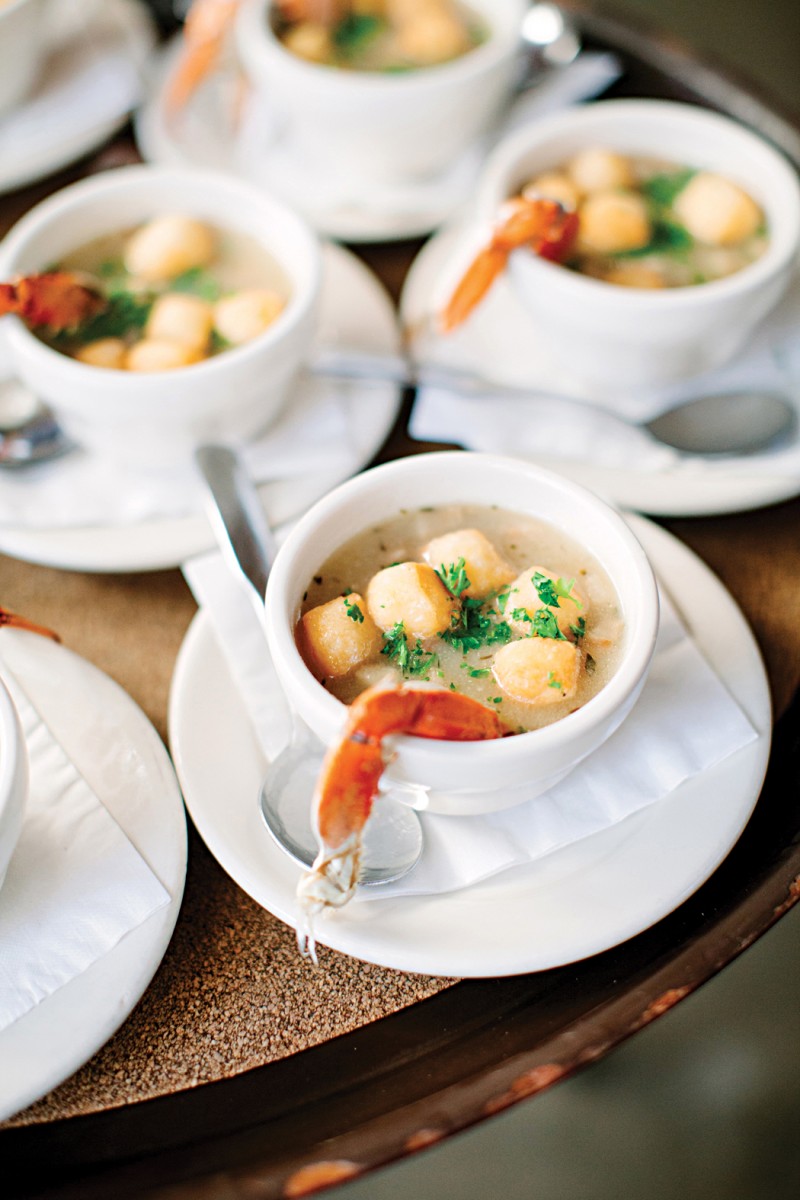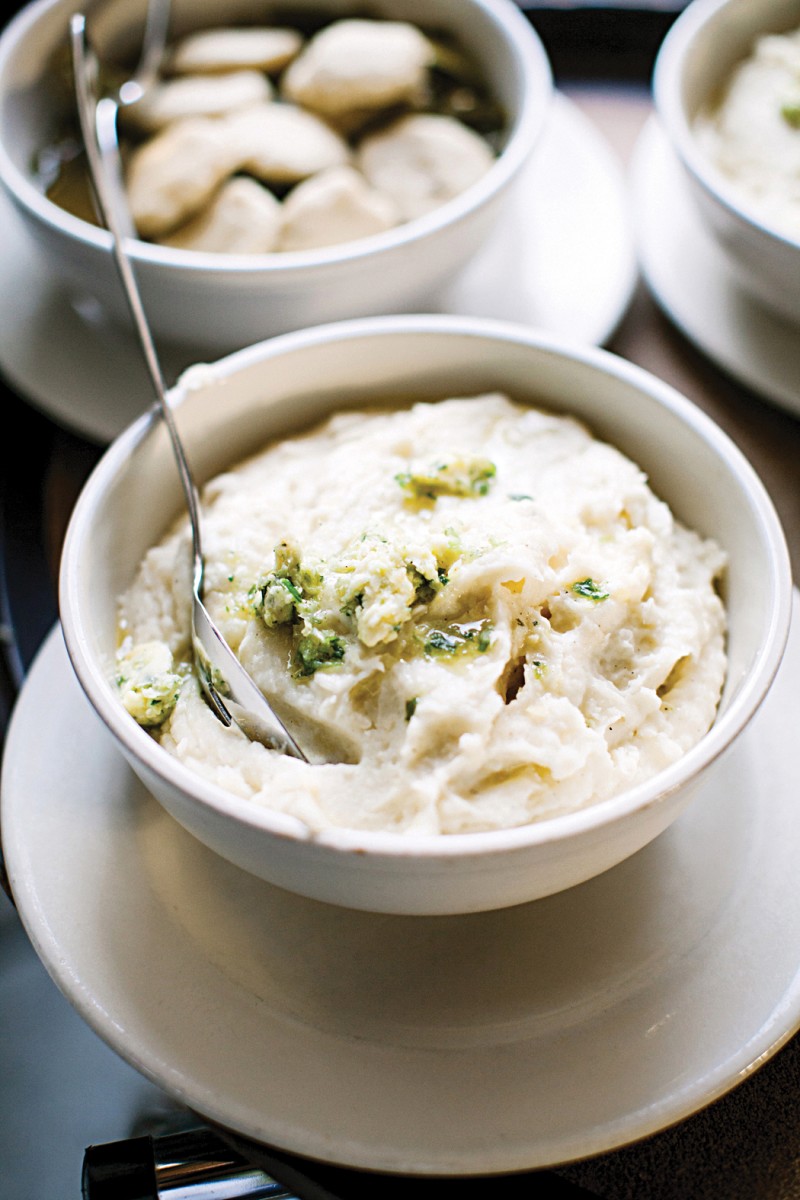Chew on This

Please bring food into this classroom.
by Claire Cusick
One of UNC’s newest courses blends equal measures of past and present — and was served up this spring to 75 students — in “Carolina Cooks, Carolina Eats,” anchored in the American studies department. The goal: Explore the history and contemporary politics of food across North Carolina.

Sharon Holland and Marcie Cohen Ferris worked together to devote an entire course to study and research North Carolina food and the cultures that food can reflect. (Photo by Anna Routh Barzin ’07)
On the syllabus:
■ A private three-course dinner at a landmark Chapel Hill restaurant;
■ A taste of the realities of making a living as a waterman on Ocracoke;
■ What weather has to do with it;
■ And let’s talk about killing hogs.
The meat of the course came from first-person accounts from outside speakers; there was a new one for nearly every class. It all was the result of an idea developed by two of the department’s faculty members — Marcie Cohen Ferris, the lead professor, and Sharon Holland — to devote an entire course, officially listed as American Studies 375, to study and research North Carolina food and the cultures that food can reflect.
One speaker, history Professor Malinda Maynor Lowery ’02 (MA, ’05 PhD) and a member of the Lumbee tribe, talked about corn, the signature contribution that Native Americans made to Southern cuisine. “You can’t have Southern food without Native food,” she said.
Morty Gaskill knows his community of Ocracoke can’t call itself a quaint fishing village if all the fishermen are gone. Nine years ago, fishermen, oystermen, clammers and crabbers got together to build their own fish house. Now, the Ocracoke Working Watermen’s Association has a waterside operations base; boats are docked and the daily catch is unloaded, iced and trucked to markets, and the watermen can spend more time on the water.
N.C. State horticulture science Professor Chris Gunter dug into the source of the subject, exploring what grows in North Carolina and how that’s affected by both markets and weather. The state has a multimillion-dollar stake in what gets summed up as produce, but it’s built on the hard work by individuals. “Every sweet potato that you’ve ever eaten,” he said, “has been picked by someone’s hand and put into a box.”
When English Professor Randall Kenan ’85 began writing fiction more than 25 years ago, he started from home — Chinquapin in Duplin County. In his books, starting with A Visitation of Spirits, the place he renamed Tims Creek is marked by rituals and traditions, many of them based on what people eat. Kenan told the class how he grew up witnessing hog killings, when neighbors would get together to share the work of slaughtering several animals at a time, and he read to the class from A Visitation:
“Once, in this very North Carolina town, practically everyone with a piece of land kept a hog or two, at least. And come the cold months of December and January folk would begin to butcher and salt and smoke and pickle. In those days a hog was a mighty good thing to have, to see you through the winter. … Of course it’s a way of life that has evaporated. You’d be hard-pressed to find a hog pen these days, let alone a hog. No, folk nowadays go to the A&P for their sausages, to the Winn-Dixie for their liver pudding, to the Food Lion for their cured ham.”
And Duplin County has come a far piece from where it once was: It is at the heart of industrialized hog farming and pork production, ranking first in the nation in 2012 in hog and pig sales, with $614 million, or 3 percent of the U.S. total, according to the U.S. Department of Agriculture.

Students Caroline Miller and Taylor Hayes serve each other corned ham at the class dinner at Crook’s Corner. (Photos by Anna Routh Barzin ’07)

Hot crab stew with fried biscuit croutons.

Mashed potatoes.

When the students came to Crook’s Corner to sample what they had been studying, their host, chef and instructor was New Bern native Bill Smith ’72.
The three-course dinner on the class schedule echoed the era of Kenan’s boyhood memories. The class assembled at Crook’s Corner and passed beneath the restaurant’s signature rooftop pig. The menu included corned ham — a short-cured ham that is “something I grew up with,” said Crook’s chef and New Bern native Bill Smith ’72. “I didn’t really realize what it meant to me until it wasn’t around,” he said. “It’s a real thing of eastern North Carolina, and it’s real specific to where I grew up, so it has all kinds of nostalgic connotations. I think of home and grandmothers.
“We had it in the winter. You usually had your first one at Thanksgiving, alongside the turkey. Then there was another one at Christmas. Then there was probably one at New Year’s. Then, when Easter came, all of a sudden you had those pink hams again for Easter brunch.”
The dish’s origin seems to be a small area around New Bern. Smith said he always figured it was the first ham served after a traditional autumn hog-killing, but he also has heard that sailors in port developed the method, which preserves the meat in several days rather than several weeks or months, because they couldn’t risk a smokehouse fire aboard ship.
Smith also prepared collard greens, cornbread, mashed potatoes and a vegetarian riff on Appalachian-style soup beans, flavoring them with just butter, onions, ketchup, salt and pepper instead of the traditional side meat. “I think it’s a dish born of poverty, like a lot of this stuff.”
Claire Cusick, a former food editor, is a writer in UNC’s Office of University Development. She was among the students enrolled last spring in “Carolina Cooks, Carolina Eats.”
ONLINE: For more about “Carolina Cooks, Carolina Eats,” go to carolinacooks.web.unc.edu.
Thanks for reading the Carolina Alumni Review
Carolina Alumni members, sign in to continue reading.
Not yet a member? Become one today.
